Creggagh
Houses within 15km of this house
Displaying 54 houses.
Houses within 15km of Creggagh
Displaying 54 houses.
| House name | Description | |
|---|---|---|
| Ashbrook | An early 18th century house, it was noted by Wilson as the seat of Mr. Moore in 1786. It was occupied by Michael Costello in 1814 and described as in a dilapidated state at the time of the first Ordnance Survey. The Irish Tourist Association file refers to a two-storey plain featured house with the ruins of a small private chapel closeby, which apparently fell into decay in the early 19th century. Some ruins remain at the site. | |
| Cloonbarry | At the time of Griffith's Valuation Cloonbarry was occupied by George Knox and was valued at £27.It was offered for sale in July 1866 by Roger Dodwell Robinson, when it was described as "an excellent dwelling house, erected by the owner's father at an expense of £2000". In 1906 Henry McCarrick was the owner of buildings at Cloonbarry, barony of Leyny, valued at £22. McTernan states that it had fallen into disrepair by the 1950s and was subsequently demolished. | |
| Carrowgowan | From at least 1814 the house was occupied by the Deanes who held it from Colonel McAlpine, who held from John Knox of Castlereagh. The house was described as in good repair, with offices, orchard and garden. Daniel H. Mellet occupied the house at the time of Griffith's Valuation. It is now demolished. | |
| Oldcastle | Built by the McJordans of Ballylahan in the late 18th century. Slater refers to it as the seat of John Bolingbroke in 1846. There are modern buildings at the site now. |

|
| Brabazon Park | Built by George Brabazon in 1777. In 1786 Wilson refers to it as "the fine seat of George Brabazon with beautiful demesnes".Slater refers to it as the seat of George Rutledge in 1846. It was held in fee by Captain Hugh Brabazon at the time of Griffith's Valuation, when it was valued at £30. Sold by the Congested District Board to the Sisters of Mercy circa 1920s, who ran a domestic economy school there for many years. It was demolished in the later twentieth century to make way for the building of a health care facility. Part of the demesne is now Swinford Golf Course and Community Sports Facility. |
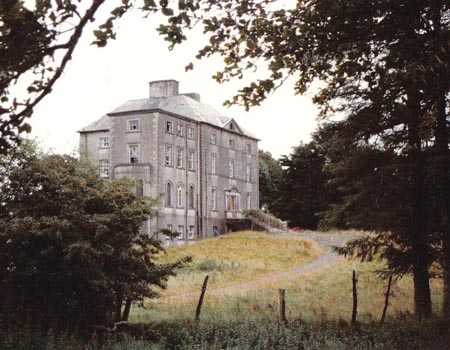
|
| Oatlands House | The residence of the O'Dowds of Bunnyconnellan until the sale of their estate in 1854 when it was bought by Charles Downing and leased to Henry McLoghry. At the time of Griffith's Valuation Downing held it in fee when it was valued at £10. It is labelled Bunnyconnellan Cottage on the 1st edition Ordnance Survey Map but as Oatlands House on the 25-inch edition of the 1890s. This is the name by which it is still known. The Irish Tourist Association file refers to Oaklands House owned by Mr McAndrew in which some of the old O'Dowd house was probably incorporated. The house has been restored and in 2015 was offered for sale. | |
| Dove Hall | This house is labelled Dove Hall on the 1st edition Ordnance Survey map. A larger house, named Belgarrow House, is shown at the site on the 25-inch edition of the 1890s. It was occupied by Courtney Strogen and his descendants during the 19th century, held on lease from the Evans family. Occupied by John A. Knox in 1906. Belgarrow is now a ruin. | |
| Listrisnan House | This house was described as in 'good repair' at the time of the first Ordnance Survey in the 1830s. At the time of Griffith's Valuation, Joseph Jordan was leasing buildings valued at £2 in the townland of Listrisnan from Myles Jordan. A building still remains at the site. | |
| Longfield House | Occupied by Colonel Kelly in 1814 and by Mrs Kelly in the 1830s. A house valued at £4 in this townland in the 1850s was occupied by Andrew Walsh. It is now a ruin. | |
| Barleyhill | In 1786 Wilson noted Barleyhill as the seat of Mr. McManus. Ruane dates the house from about 1748 with alterations in the 1770s and 1790s. He states that the house and 170 acres were occupied by George Harkin at the time of Griffith's Valuation, however the Valuation records Bernard McManus as the occupier of the house valued at £15. Quinn records that Bernard McManus had gone to live at Brownstown in 1856. The Aitken family have lived at Barleyhill for over a hundred years. |
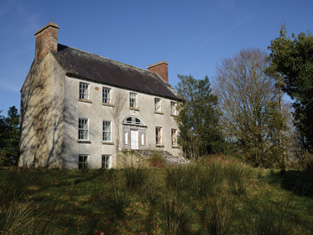
|
| Bellavary | Charles Goodwin lived in the house in the late 1830s. The Landed Estates' Court rental records that Bellavary House was leased to Standish O'Grady McDermott by William Malley on 10 Feb 1859 for 21 years. It later became a Royal Irish Constabulary barracks and burned down in 1920. | |
| Moorbrook | In 1786 Wilson refers to "Moore-field" as the seat of Mr. Moore. Leet's Directory records 'Moorfield' as an 'unoccupied seat' in 1814. The house appears, however, to have become known as Moorbrook as it is thus labelled on the Ordnance Survey maps. Henry Wills held Moorbrook at the time of the sale in 1854. At the time of Griffith's Valuation, it is described as a "herd's house" and occupied by Francis O'Grady. It is labelled as "in ruins" on the 25-inch Ordnance survey map of the 1890s. A modern house has been constructed near the site. | |
| Cloongee | Originally a Moore home which was sold by Harloe Phibbs Baker to the McDermotts who lived there until the 20th century. At the time of Griffith's Valuation it was held in fee by Owen McDermott and valued at £7. The National Inventory of Architectural Heritage notes Cloongee as a rare survivor of a late-seventeenth century house in county Mayo. It is still extant and occupied. |

|
| Newcastle | Newcastle was the home of Andrew Clarke O'Malley, son of George O'Malley of Spencer Park. Following the death of Andrew's son, Owen Bingham Manners O'Malley, in 1886, Newcastle became the property of his sister, Elizabeth Brewster. Count Manus O'Donel, a Major General in the Austrian Service, lived at Newcastle in the late 18th century. In 1786 Wilson refers to it as the seat of General O'Donnell. Occupied by David Ruttledge in 1814 and by Jacob Beckett at the beginning of the 20th century. Only a portion of the original building is now extant. |

|
| Mullaghawny | Charles 'Sturgeon' (Strogen) was resident at Mullaghawny when Leet's Directory was compiled in 1814 and the Ordnance Survey Name Books refer to the dilapidated state of a mansion house in the townland of Mullaghawny belonging to Charles Strogen. Only a small portion of the buildings are visible on the 25-inch Ordnance Survey map of the 1890s. | |
| Killedan | The seat of the Taaffe family and later the home of the McManuses, a well known medical family of whom Emily McManus, Matron of Guy's Hospital, London, was a member. |
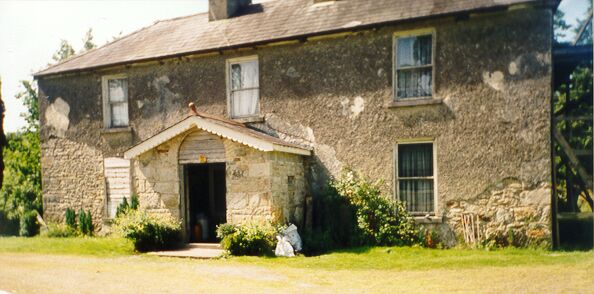
|
| Sallymount | Home of Lewis Atkinson in the early 19th century. At the time of Griffith's Valuation the house was leased by Edward Atkinson from the Wingfield estate when it was valued at £4. The site is now occupied by farm buildings. | |
| Quignashee | Edward Howley occupied a property valued at £5 at Quignashee, barony of Tireragh, as well as 300 acres, at the time of Griffith's Valuation. Since 1898 this townland has been located in county Mayo. A building remains at the site. | |
| Rahans | The home of the Atkinson family, Wilson notes in 1786 that it was the residence of Charles Atkinson and "very pleasantly situated". It was occupied by the rector of Crossmolina, the Reverend Edwin Stock, for a few years prior to 1815. Rahans was described in 1855 as "a comfortable dwelling house, in a fair state of repair" and occupied by Mrs Frances Atkinson. At the time of Griffith's Valuation it was the home of George Orme. In 1925 Adelaide R. Orme of New South Wales sold Rahans demesne to Patrick J. Ruttledge of Ballina for £3,000, [see Acc. 1165/8/11 National Archives.] It is no longer extant. | |
| Ardnaree Rectory | At the time of Griffith's Valuation Rev. Joseph Verscoyle was occupying the house at Glebe, parish of Kilmoremoy, valued at £30. This house is no longer extant. | |
| Downhill | The house at Downhill is recorded as being built by Mr. Brennan, Merchant, Ballina. It appears, from the Ordnance Survey Name Books, that the townland of Knockalyre or Downhill was part of the Gore estate in 1836. Dr. McHugh of Ballina also had an interest in the property which he was renting to Rev. Thomas Feeney in 1857. Colonel Knox Gore also had a mill complex in this townland which, at the time of Griffith's Valuation, he was leasing to William Symes. Downhill House became a hotel when it was purchased by the Moylett family in 1936. |

|
| Ardnaree Cottage | Ardnaree Cottage dates to at least the early eighteenth century and possibly earlier. It was part of the Gore estate. Wilson, writing in 1786, refers to "Mr. Jones' charming demesne". In 1837 it was the residence of Thomas Jones and in 1857 it was leased by Col Arthur Knox Gore to Anne Hearne when it was valued at £10. The National Inventory of Architectural Heritage notes it as an important component of the domestic built heritage of Ballina. It is still extant and well-maintained. |

|
| Ballylahan | A property held by Pat McLaughlin from Sir William H Palmer in the early 19th century and by the Atkinsons at the time of Griffith's Valuation. Quinn writes that it was repossessed at the time of the expiration of their lease. It was a ruin by the publication of the 25-inch Ordnance Survey map of the 1890s. | |
| Belleek Castle/Ballina House | Edward J Howley held Belleek Castle and demesne on a lease originally granted by James O'Hara 2nd Lord Tyrawley to Vaughan Jones for 999 years, dated 25 Mar 1739. He was residing at Belleek in the 1830s. The Castle was leased to the Pery family in the late 1860s. It is now known as Ballina House. |

|
| Beaufield House | "Bowfield" House was occupied by E. Howley in the 1830s. On both the 1st and 25-inch editions of the Ordnance Survey maps the house is labelled Beaufield House. No house of more that £1 valuation was recorded in the townland of Carrowcastle at the time of Griffith's Valuation. It is no longer extant. | |
| Ellaghmore | Occupied by Edmund Howley in 1814 and by E. Howley in the 1830s. A house valued at £2.10 shillings was occupied by Bartholomew Higgins at the time of Griffith's Valuation. It is no longer extant. | |
| Carrowmore/Carramore | Wilson notes "Keromore" as the seat of Mr. Vaughan in 1786. The Ordnance Survey Name Books refer to the house as "a modern structure built in 1819". At the time of Griffith's Valuation it was held in fee by Captain O. Jackson and valued at £30. The Irish Tourist Association File states it was a guest house in the 1940s run by Mrs Reid. Bence Jones writes that it is now a ruin. | |
| Wood Park | This was the earlier house on this estate, shown as Woodpark on the 1st edition Ordnance Survey map of 1838. It was lived in by the Anderson family in the 1830s and 1840s. At the time of Griffith's Valuation it was held in fee by Thomas Jones and valued at £6. A house diminished in size but still labelled Wood Park is shown on the 25-inch map of the 1890s. This property does not appear to be extant now. [Charles Coyne also lived at Massbrook in the mid 19th century. See also under Massbrook] | |
| Mount Falcon | A lodge and offices were built in 1826. In 1876 the building of Mount Falcon Castle was completed. Bought by the Aldridges in 1932 the Castle was run as a country guest house in the latter part of the 20th century. Following the death of Mrs Aldridge in 2003 the property was bought by the Maloney brothers and is now run as a luxury hotel. See www.mountfalcon.com |

|
| Carns Lodge | In 1906 Lord Harlech's estate was the owner of buildings valued at £18 at Carns, parish of Kilmacteige. . McTernan notes the house as Carns Lodge, which he says was built in the late 1850s as a gamekeeper's house. It is still extant and occupied. | |
| Errew Grange | A Victorian Gothic house built circa 1870s. It was bought from Granville Knox by the Burkes of Ballina, solicitors. The Burkes leased it to the Order of Jesus and Mary before the Order moved to Gortnaraby in 1916. It became a hotel but burnt down in 1949 and was later restored. |
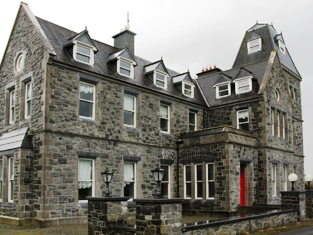
|
| Rinagry Cottage/Rinagry House | The residence of a junior branch of the Gortnaraby family, described at the time of the first Ordnance Survey as "a neat thatched cottage built in 1807". Rinagry was leased by Edward S. Perry from John Ormsby at the time of Griffith's Valuation, when it was valued at more than £10. An enlarged building is labelled Rinagry House on the 25-inch Ordnance Survey map of the 1890s. It is no longer extant. | |
| Coolcronaun | Coolcronan House was built by Edmond Pery at the time of his marriage to Sarah Jane Knox Gore in the mid-nineteenth century. The family owned the property until the 1950s. The Irish Tourist Association File states that it was erected in 1860 by the Knox Gores. It was extensively renovated in the late 1990s and is still extant and available as holiday accommodation. See http://www.coolcronan.com. |

|
| Woodbine | A house belonging to the Gores, Earls of Arran, which was the residence of the Ham family until the 1860s, one of whom built the Upper Bridge over the River Moy in Ballina. The Hams subleased from the Jones family. The house was bought by Anne Elizabeth Jones in the early 1870s in trust for her son Henry Hastings Jones. The Jones family sold Woodbine to an American lady in 1939. It was offered for sale again in recent years. |
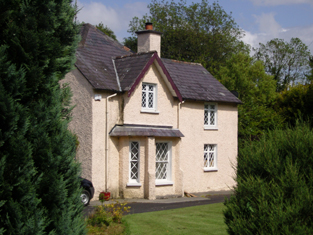
|
| Charleville | A late 18th century house, the main residence of the family until 1865. Held in fee by Charles L. Fitzgerald at the time of Griffith's Valuation when the buildings were valued at £20. It is now a ruin. | |
| Turlough Park | Built in 1865 to the design of Sir Thomas Newenham Deane, this Victorian Gothic house was sold to Mayo County Council in 1991 and is now part of the Museum of Country Life. |
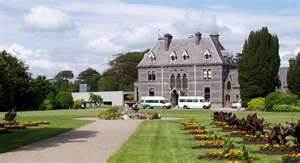
|
| Turlough House | Built early in the 18th century this was the main residence of the family for much of the 18th century. In 1786 Wilson refers to Turlough as the seat of Charles Lionel Fitzgerald. It was referred to as Turlough Park though it is not named on the 1st edition Ordnance Survey map and was unoccupied at the time of Griffith's Valuation. It is now a ruin. |
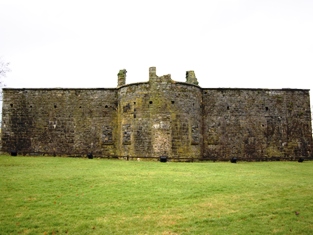
|
| Turlough Lodge/Cottage | Home of the Semple family in the 19th century. At the time of Griffith's Valuation William Semple occupied a house valued at £10, leased from the Fitzgerald estate. It is labelled Turlough Lodge on the 25-inch Ordnance Survey map of the 1890s though it also appears to have been known as Turlough Cottage. It is still extant but derelict. |
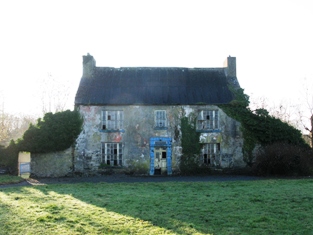
|
| Liscottle | Home of the Horkan family in the second half of the 19th century. It was leased by George "Harkan" from Robert Ruttledge at the time of Griffith's Valuation when the house was valued at £2. It is labelled Liscottle House on the 25-inch Ordnance Survey map of the 1890s. Liscottle is no longer extant. | |
| Massbrook | The Irish Tourist Association file makes it clear that there were two houses at Massbrook, both in good condition in the 1940s. One was of French design erected in the 1890s by Colonel Johnston, the then owner of the estate. There was also an older and smaller house, see under Woodpark. D.15166 in the National Archives refers to the house and demesne of Massbrook in 1868. Described by Bence Jones as a late Victorian house, the seat of the Walsh family. In the early 1990s Mrs Mary Robinson, former President of Ireland, purchased the house known as Massbrook, formerly owned by Denis Ferranti. | |
| Carns (Kilmacteige) | At the time of Griffith's Valuation, Henry McCarrick was leasing a property valued at £14 in the village of Aclare (Carns townland), from the estate of William Evans. A shooting lodge is marked in this townland on the 25-inch Ordnance Survey map of the 1890s. | |
| Coolaghy Lower | Reverend George Hanson was leasing this property from the Abercorn estate at the time of Griffiths Valuation in the 1850s, when it was valued at £12. A substantial farm exists at the site. | |
| Galdonagh Upper | Charles Watson was leasing this property from the Abercorn estate at the time of Griffiths Valuation in the 1850s, when it was valued at £12. A hose and farm buildings are still extant at the site. | |
| Tullyrap | Alexander Finlay was leasing this property from the Abercorn estate at the time of Griffiths Valuation in the 1850s, when it was valued at £25 and had an adjacent mill. A substantial farm still occupies the site. | |
| Foyle View | Alexander Porter was leasing this property from the Abercorn estate at the time of Griffiths Valuation in the 1850s, when it was valued at £10. A farm still exists at the site. | |
| Tullyowen | Eliza Jane Campbell was leasing this property from the Abercorn estate at the time of Griffiths Valuation in the 1850s, when it was valued at £12. In 1786 Wilson noted it as a seat of a Mr Thomson. It does not appear to be extant now. | |
| Whitehill (Raphoe North) | James Browne was leasing this property from the Abercorn estate at the time of Griffiths Valuation in the 1850s, when it was valued at £11. A house is still extant at the site. | |
| Drumenan | James Alexander was leasing this property from the Abercorn estate at the time of Griffiths Valuation in the 1850s, when it was valued at £12. A house and farm are still extant at the site. | |
| Ardagh (Raphoe North) | Andrew Rolleston was leasing this property from the Abercorn estate at the time of Griffiths Valuation in the 1850s, when it was valued at £11. | |
| Raphoe Bishop's Palace | William Ker was leasing this property from the Ecclesiastical Commissioners estate at the time of Griffiths Valuation in the 1850s, when the buildings were valued at £45. The Bishop's Palace was destroyed by fire in 1838 and has remained a ruin ever since. |
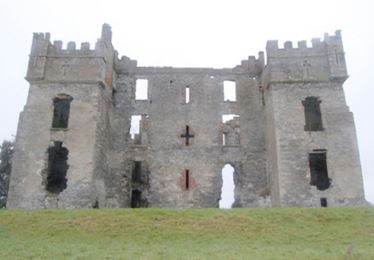
|
| Drumineney | David Wilson was leasing this property from the Ecclesiastical Commissioners estate at the time of Griffiths Valuation in the 1850s, when it was valued at £16. The National Inventory of Architectural Heritage suggests that the current house at this site was developed c.1870 from an earlier building. Robert Wilson was also leasing property in this townland at the same time. A house and extensive farm exist at the site. | |
| Tops (Raphoe) | John Wilson was leasing this property from the Ecclesiastical Commissioners estate at the time of Griffiths Valuation in the 1850s, when it was valued at £18. The National Inventory of Architectural Heritage suggests the current house was built c.1852 possibly on the site of an earlier house. Eliza Wilson was also leasing property at this location in the 1850s. |
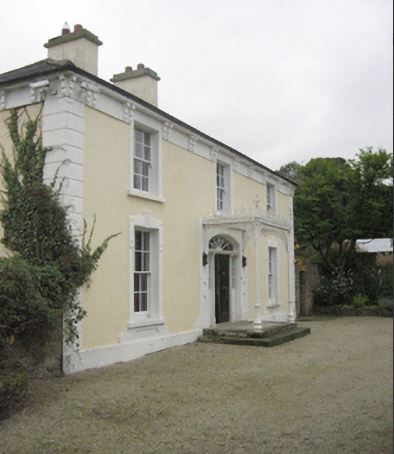
|
| Coolaghy (Raphoe) | William Hamilton was leasing this property from Reverend Lord Edward Chichester's estate at the time of Griffiths Valuation in the 1850s, when it was valued at £20. It appears to have been associated with the Hamilton family for much of the nineteenth and early twentieth centuries. It is still extant and occupied. |
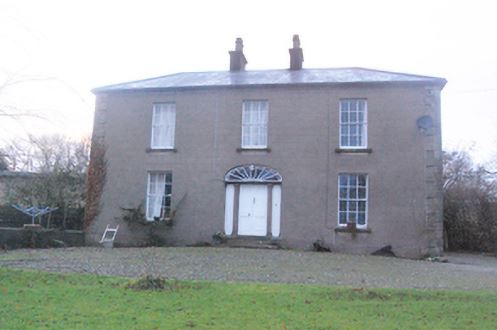
|
| Altaskin Lodge | Robert Rankin was leasing this property from the Ecclesiastical Commissioners estate at the time of Griffiths Valuation in the 1850s, when it was valued at £16. |

